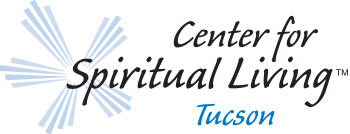Limitless, Infinite and All That Jazz! by Mariann Moery
 Raymond Charles Barker when talking about ‘Limitless Opportunity’ chose this text from the Bible: “The world, or life, or death, or things present, or things to come are all yours” 1 Corinthians 3:22
Raymond Charles Barker when talking about ‘Limitless Opportunity’ chose this text from the Bible: “The world, or life, or death, or things present, or things to come are all yours” 1 Corinthians 3:22
Barker continued: “This statement of Paul’s tells you that you can have what you want; you can become what you want; the Universe is a limitless opportunity for the exploration by the individual…. the people who are near to the heart of God are the people who are active – the people who are adventurous,….. not merely good; they are good for something. They are projecting, creating, and demanding from life that everything shall be theirs.” Raymond Charles Barker: Collected Wisdom 187-188
Jesus: It is done unto you as you believe. Matthew 8:13
“We do not have to do it, it is done unto us, it done by a power that is all….Life externalizes at the level of our thought.” Ernest Holmes: Creative Mind 25
“The law implanted within us is that we need nothing except ourselves and this All-Wise Creative Mind to make anything; and that just so far as we depend upon any condition, past, present or future, or upon any individual, we are creating chaos.” Ernest Holmes: Creative Mind 24
We know this. We have read it, studied it, been instructed in it….and yet. It is so easy to forget. To slide into …it is done unto me by events outside of my control….ooops.
One final quote from Ernest
“Where do we find the one who can live above their surroundings, who in their own thought can dominate all conditions, and in the midst of the crowd keep their own way and their own counsel. Ernest Holmes: Creative Mind 20
It is by our thinking, our knowing, our consistent persistence in ignoring the events that distract and staying fully present in the game – so say Holmes, Troward and even the Dali Lama. To stay present with joy knowing we are delivering our best unique expression as our contribution to lift that common hour pool of thought. That ‘gene pool of humankind’s history’ that governs events when we do not direct our own Life.
But first, before we can be in charge… we must decide and specify and keep constant what it is we want. The precise object/idea/change we want and then let it happen. As in get out of the way while holding on to the knowing that it or something better is coming.
Keep it in Focus. Always. Trust and Know. And so It is.
–In Peace, Mariann












